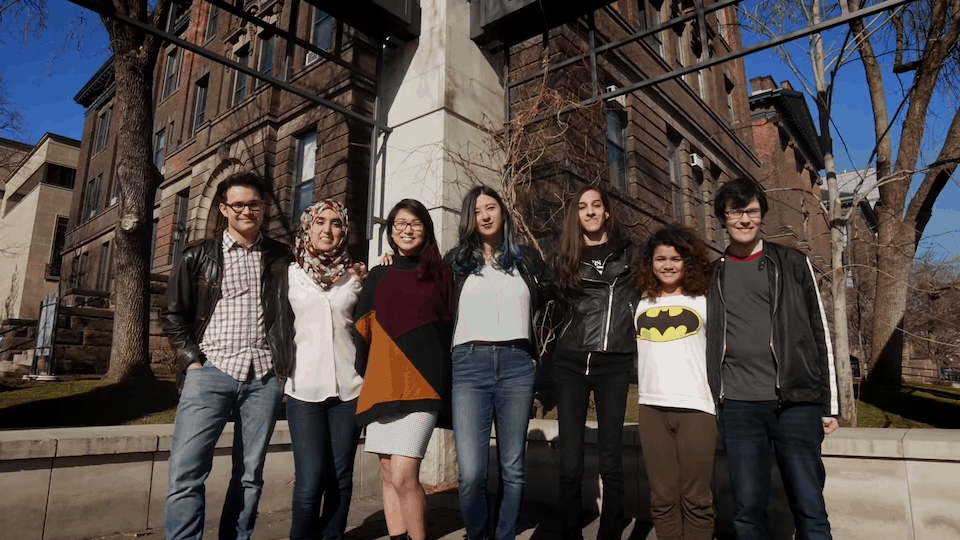Promotional material costs a good deal of money; in order to pay for these advertisements, the UTSU reimburses candidates for their expenses up to a maximum amount dependent on the proportion of votes the candidates receive.
Setting the caps
The UTSU determines the allotment of funds according to the percentage of votes a candidate wins. Candidates who obtain between 15 and 100 per cent of the vote are eligible to claim money based on the highest funding bracket.
Executive candidates, of whom there are seven, may claim up to $1,200 each. The five academic director candidates, eight college director candidates, and eight professional faculties director candidates are allotted $100 each, with at-large candidates permitted up to $300 each.
The maximum possible combined total for the team is $11,100.
“We have to acknowledge the fact that many students feel disengaged with the UTSU. It’s been a recurring theme this past week and a half. Many students don’t know what the UTSU is or what it does,” said Jasmine Wong Denike, president-elect from the Hello UofT slate.
“Elections aren’t just about the candidates running, we are also creating awareness and points of engagement with the UTSU. In elections, students can have a voice in how the UTSU is run and, by voting, can create a UTSU that they would actually want to see,” Denike added.
Overall campaign expenses
“We’ve been conservative in our spending and have only spent what we believe was necessary to create awareness about Hello UofT while informing students about the 2016 Elections,” said Denike. “We have exclusively spent our available funds on promotional materials. In total we estimate that we have spend about 60 per cent of our ‘available maximum funds’ on the campaign in total.”
Denike claims that Hello UofT stayed “well under [their] maximum available funds” and have saved money on the campaign, spending a total of $7,361.
According to 1UofT presidential candidate Madina Siddiqui, her slate spent “just over $3,000 on their campaign.”
“We were well below the campaign expense limit,” Siddiqui said. “We need financial accommodation and we didn’t want to risk not qualifying for reimbursement so we spent a lot less than the limit.”
Where did the money go?
Both slates used online promotion strategies that included videos, websites, and social media platforms.
“As all of us are full-time students, we really didn’t have much of a budget for promotional materials,” said Siddiqui, who added that her team spent the “bare minimum” on their campaign website in order to conserve funds.
Denike said that Hello UofT put most of their energy into Facebook and Instagram advertisements. “Our online presence was crucial in engaging students, as our Hello UofT Facebook page garnered over 1,300 likes by the end of the campaign,” she said.
Hello UofT’s promotional videos included shots of UTM and St. George, several seconds of which were shot using a drone. There was also a scene filmed in a subway station, which, if classified as a commercial project, would result in Hello UofT needing to apply for a permit to film.
Denike does not consider the videos to be commercial projects in a monetary sense. She clarified that Hello UofT asked a TTC supervisor if they could film inside the station. “They allowed us to film briefly,” Denike said.
Denike declined to give the name of Hello UofT’s videographer, nor to reveal the exact cost of the video, citing respect for the privacy of their freelance work.
Despite the quality of their videos, Denike stated that Hello UofT did not sacrifice anything to accommodate the expense of the videos. “We re-channeled most of our resources to online campaigning because of the removal of in-person campaigning to students during voting days,” Denike explained.
1UofT took a different approach, preferring to build their website and shoot their videos with volunteers. “Our video was filmed by fellow U of T students and I love them! We didn’t have access to a production team or equipment but I think our videos are personal and show all of us for who we are in real life,” said Siddiqui.
Unlike Hello UofT, 1UofT used most of its funds to expand its physical presence. “Most of the money was spent on print materials, like banners, posters and flyers which help make the election accessible to students on campus,” said Siddiqui.


